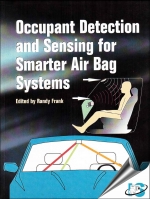Tab Article
September 2003 marked the beginning of the legislated phase of advanced frontal air bag systems for vehicles sold in the United States. Although earlier models may have been equipped with some of the features, Federal Motor Vehicle Safety Occupant Crash Protection Standard (FMVSS 208) requires that 20% of MY2004 vehicles be equipped with these "smart" air bags. The percentage increases to 65% starting in September 2004 and then to 100% by September 2005 for MY2006 vehicles.
Occupant Detection and Sensing for Smarter Air Bag Systems chronicles the progress made towards improving occupant safety in vehicles. Compiled by the leaders in occupant protection and the "who's who" of global industry, this book features a collection of best SAE technical papers that focuses on occupant detection and sensing for discriminating between different types of occupants, their positions, and the presence or absence of passengers.
Sections include:
Recognizing the Problem
- Research
- Simulation, Modeling & Testing
- Sensing Technologies
- Systems & Integration
- Beyond Advanced Air Bags
- While considerable overlap occurs between sections, the six classifications provide a basis to account for the requirements to improve occupant safety in vehicles. The technical papers within each section are arranged in chronological order to present the progress that has occurred. Frequently, the earlier papers provide an in-depth background that is missing on more recent papers, especially useful for those just getting involved in occupant sensing, while other historical papers provide insight to improvements in analyzing the problem and steps towards the manufacturable solutions that are appearing today.


